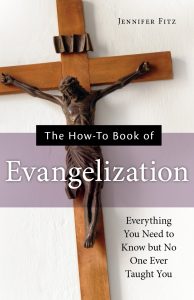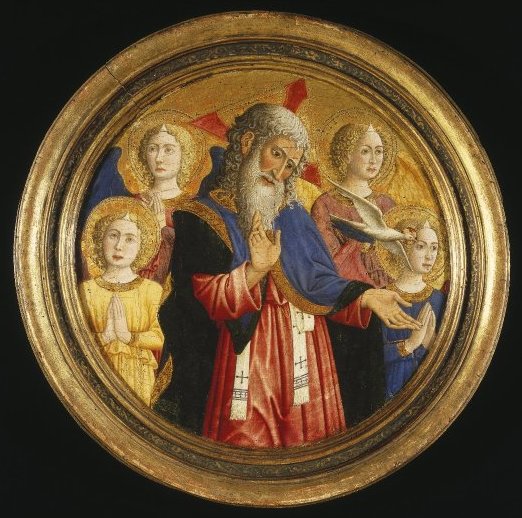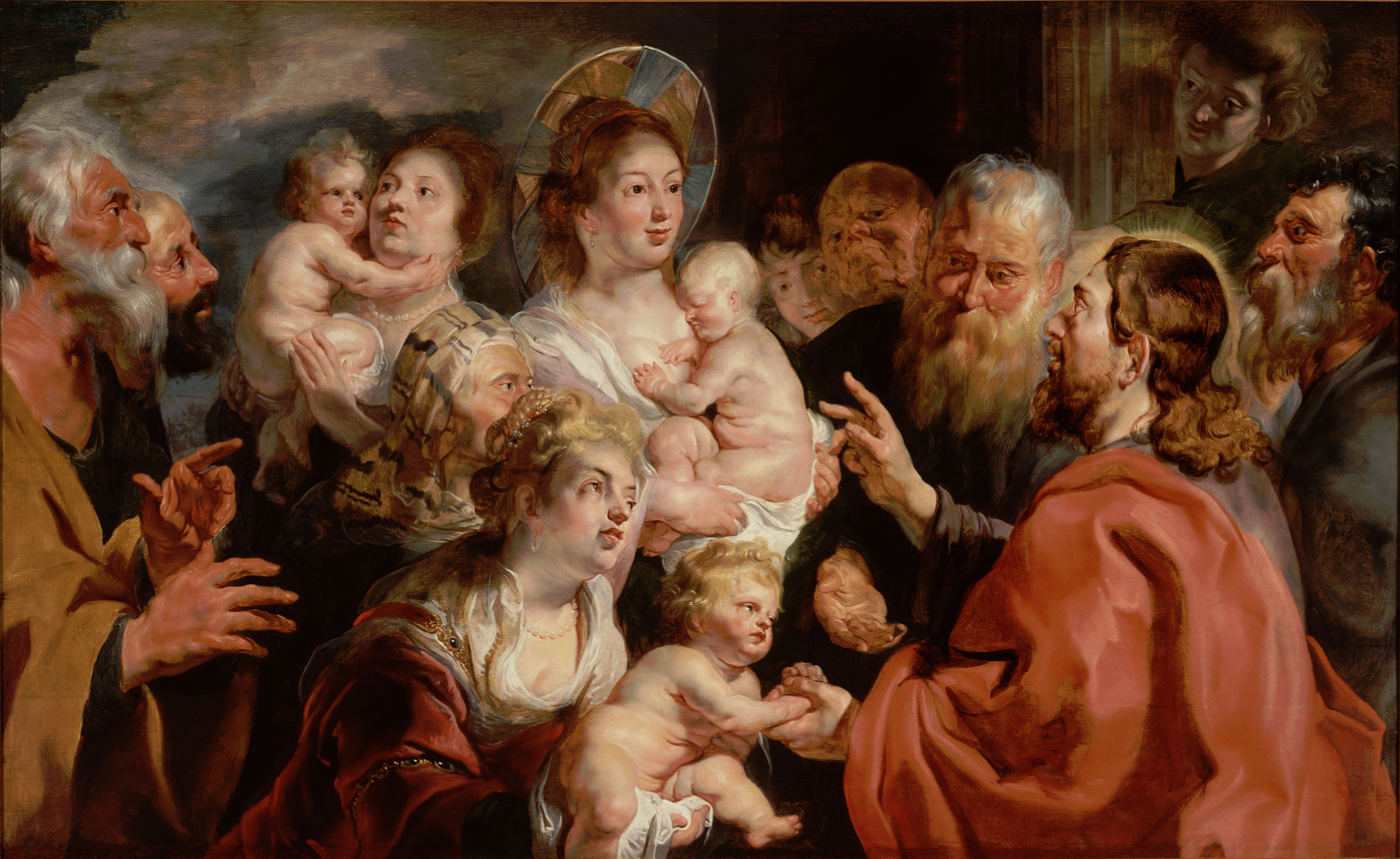So the US Bishops have assembled again, and following a hot tip I watched the session with Bishop Barron’s report on evangelization. You can view the whole thing here.
It is worth watching if you have the time. I started jotting down a few of Bishop Barron’s points on post-it notes for reference as the new book goes into final edits in December, and ended up annotating the whole transcript instead. [FYI for those tempted to create snarky hierarchy-themed bingo boards, ahem, YouTube’s auto-generated captions and transcript do some fascinating things with the words ad limina.]
There were many valuable points raised, but the one I want to talk about now occurs around the 46-minutes mark. Bishop Daniel Conlon raises the question of evangelization versus catechesis. In his comments and Bishop Barron’s reply, a thorny problem for catechists is discussed: How do we both provide the rigorous catechesis that young people need (discussed extensively earlier in the presentation), and evangelize the barely-Catholic youth in our parishes?
As the bishops’ review of the state of evangelization rightly points out, it is no good throwing a pile of commands and directions at someone who is still asking basic questions about life, the universe, and everything. But at the same time, for the young person (or older person) who has largely accepted the Catholic faith, and in a different but crucial way for the young person whose mode of grappling with the faith is headily intellectual, the hunger for theology is a survival drive. Serious examination of the faith for some young people is life-saving nourishment.
And yet that same theologically-intensive approach to the faith would absolutely drown a different kid also sitting in the circle at the youth group ice-breaker.
So what do you do?
The present solution — parish food fight, and last man standing gets to organize the youth program along his or her favorite lines — is not a good solution. It’s not just a bad idea because yelling at your pastor is poor form (so I’ve been told, more than once), but also because “young people” are not a homogenous lump of catechetical tumor.
The young people who attend your parish are not identical to one another. They have differing academic abilities, differing faith backgrounds, and differing spiritual needs.
Imagine if pediatricians organized conferences where they attempted to hash out a single mode of treatment for every child. Imagine showing up at your child’s doctor’s office, and the appointment went like this:
Parent: My kid has a badly swollen knee. It started about three weeks ago.
Doctor, nodding gravely: Ah yes. I see. You will definitely want to start our regimen of asthma treatments. It’s a shame you didn’t come in sooner, but it’s not too late.
Parent: I don’t think you understand. It’s the knee.
Kid: My knee really hurts. I can’t play soccer anymore.
Doctor: Yes! It’s impossible to play soccer if you can’t breathe well! What we need you to do is come in once a week for breathing treatments.
Kid: I can breath just fine. I don’t need breathing treatments. It’s my knee that hurts.
Doctor: Well, it never hurts to improve your breathing. Many children have undiagnosed asthma, and so it’s important that we focus on making sure you can breathe well first. When you’re older there will be plenty of time to look into your knee, if that’s important to you.
Parent: But if we don’t treat the knee, isn’t my child likely to get out of shape and have a worse time keeping up?
Doctor: Yes. Exercise is so important! That’s why we require all patients to receive weekly breathing treatments, to make sure they can exercise well.
Parent: I don’t think that we want to do the weekly breathing treatments. We’re looking to understand why the knee is swollen.
Doctor: I’m sorry. With an attitude like that, obviously your child is not going to get any better. In all my years of medical practice, I’ve found that if we don’t require breathing treatments, children with undiagnosed asthma can get seriously ill, and even die. I’m concerned you don’t take your child’s health seriously.
Parent: Could you refer us to a knee specialist, perhaps?
Doctor: Of course! After you child finishes college, it might be possible to find a doctor’s office with a knee program. Though honestly, most Singles Doctors and Young Adult Doctors don’t do knees. We did have an OB-GYN who treated a sprained ankle once, though. Knees are more likely to come up in the Seniors treatment center.
Kid: I hate doctor’s offices. Last year I had to spend six weeks in a cast because four of the kids in our treatment group had broken wrists.
Doctor: Oh yes. I’m so glad your group was treated for that! Many children hurt their wrists skating or climbing trees. In any case, I doubt it’s your knee. We have extensive research showing that breathing treatments are far more effective at keeping young people in your grade alive and healthy. Let’s just go ahead and sign you up, and you can give it a try, and I think if you have a good attitude it will work wonders for you. Remember, you only get out of treatment as much as you put in, right? Big smile for me, okay?
Disaster. But before you lay into the “doctor” in this situation, keep in mind the doctor is only doing what we’ve asked. We’ve spent generations now commanding youth ministers and faith formation directors to develop a single program that somehow effectively treats every patient in the pediatric hospital for sinners — and then we heap on the blame when an overworked, underpaid staff member isn’t able to magically cure all the youth of the parish in that sacred hour a week of instructional time.
There’s an alternative to this approach, and your pediatrician is already doing it, and interestingly it’s the same thing the Church prescribes: Parents as primary educators, passing on the faith in the domestic church.
What would happen if we abandoned the orphanage-model of faith formation and operated the hospital for sinners more like a good doctor’s office?
We’d quit scolding and start educating parents. When public health professionals notice parents aren’t getting their kids treated, they don’t rely on general admonitions to “Take your child’s health more seriously!” At my doctor’s office there are posters on the wall and racks of pamphlets explaining common medical problems, and signs to look for, and treatments to pursue. Does your parish educate parents on the common spiritual illnesses of youth, and how to prevent and treat them?
We’d give parents realistic ideas for how to educate their children in the faith, and expect them to follow-through. At the annual well-visit, the nurse runs through a list of age-appropriate potential concerns. The advice that goes with is concrete. Not a vague: Are you protecting your child from head injuries? but Does your child wear a helmet when bike riding? The best doctors take into account the family’s resources and limitations, and the child’s true needs, and work with parents to find solutions when, say, the kid won’t eat fruits and vegetables, or constantly unbuckles in the car. [Duct tape? Not kidding.] Parents usually will rise to expectations if the medical team can find a solution that the parent can reasonably hope to carry out.
We’d focus heavily on helping parents instill everyday spiritual health habits, but train parish staff in the diagnosis and treatment of serious problems. Our pediatrician is an excellent cook as it happens . . . but it’s not her job to feed our family. That’s my job. Do I sometimes slack on that job? You bet. But even on days when my kids have popcorn and ice cream for dinner, it’s better that our doctor focus her time on becoming as knowledgeable as she can on detecting and treating (either herself or via referral) the serious problems. Most appointments will end up with our doctor prescribing a simple course of treatment at home; every now and then, one of the kids will need more advanced care.
What would happen if we didn’t divide-and-conquer this way? I’d probably have a dead kid, thanks for asking. My pediatrician would be so bogged down with the weight of attempting to somehow feed our family a balanced diet (and do it in one weekly dinner twenty-five nights a year) that she’d never have the time and energy to stay current in her specialty and schedule one-on-one appointments. She’d never have discovered, in a routine five-minute check-up before a vaccine, the thing that could have killed my child. But because she specializes in treating the hard stuff, and leaves the day-to-day to me, when we need her expertise, she’s able to give it.
But the parents are neglectful! We lament. Well, yes. The parents are dropping like flies themselves, and Bishop Barron’s presentation addresses that. You can’t care for someone else when you yourself are dead.
Build Better Orphanages! is not the solution to the spiritual death of the adults in the congregation. You cannot bypass the parents. There are not enough youth ministers in the world, and never will be, because that is not God’s plan for the human family. Evangelize the parents, catechize the parents, and deploy the parents to do likewise for their children.
This is a constant, all-at-once process. Our pediatrician is effective because she assumes the goodwill of parents. We parents might know nothing at all about medicine, but we do love our kids. That’s all she needs for a start. If a parent is coming to your parish, that parent is ripe for the Good News. Who doesn’t want eternal life for themselves and their children, if only they know it’s attainable?

Here, enjoy this book cover. I am. Last round of edits starts in December, speak up at the blog discussion group if you have any final requests.



![Sharing Your Catholic Faith Story: Tools, Tips, and Testimonies by [Ward, Nancy]](https://images-na.ssl-images-amazon.com/images/I/41vuaFFLMoL.jpg)




